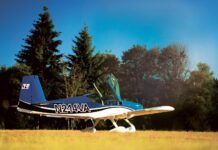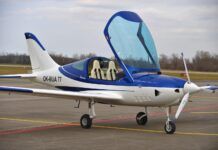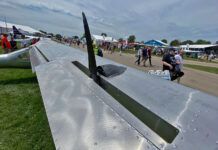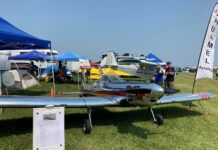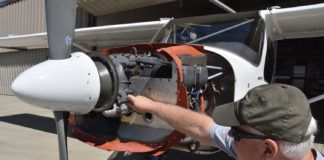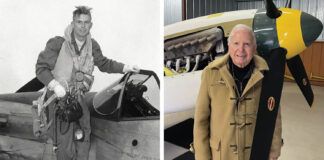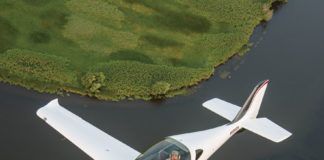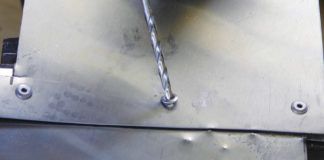Light Stuff
Choices, choices.
One mans SLSA decision.
John Horn learned to fly and got his private license with the U.S. Army ROTC at the University of Alaska in Fairbanks. That caused him to fly helicopters in Vietnam and the Alaska National Guard. He also flew extensively in the Civil Air Patrol as an instructor and check pilot until three years ago when he and his wife moved to Oregon. He has owned various aircraft, mostly Cessnas, since 1974. As a district manager of many of Alaskas airports including Fairbanks and Anchorage, he flew his C-206 for business and pleasure for 18 years before downsizing to a Cessna 182.
At AirVenture/Oshkosh 2005, Horn learned enough about Light Sport Aircraft (LSA) to become interested in the Special (factory-built) category. By golly, they look like real airplanes, he thought. I knew that most of my flying was not using the Cessnas cross-country capability. When my wife and I go somewhere now, we fly by jet or drive our motor home. Most of my Cessna time was with one or two people aboard, and I was dinking around on 13 gph.
Last year Horn began serious research with the intention of buying an SLSA. Part of the initial search included three American-made taildraggers. He looked at the Legend and Cub Crafters Cubs, and the RANS S-7S Courier was also in contention. He visited the RANS factory in Hays, Kansas, where he was interested in the new S-19, which was not yet available. The Vans RV-12, which will be marketed as an Experimental/Amateur-Built kit, was also on the list, but he decided against waiting for the kit and building it.
Decision Criteria
Horns wife, Shirley, shortened the decision-making process by declaring that she didn’t relish flying a lot while staring at Johns back. That eliminated the Cubs and the Courier with their tandem seating. Putting Shirley in the front seat wasn’t seriously considered.
One major concern was the potential for long-term support. Nearly 40 manufacturers are producing 50 different FAA-approved factory-built LSAs including a few powered parachutes and powered hang gliders (trikes). Community consensus is that some of these aircraft will not sell in large enough numbers to keep their importers or manufacturers in business, especially if Cessna decides (as expected) to produce its Cessna Sport. Horn therefore looked at current sales numbers as an indicator of which designs are likely to be available and supported in the future.
His research tools included the Internet and magazine articles on LSAs. The entire research experience was, of course, considerable fun, especially in the see-and-fly mode that helped make the final decision.
The Priority List
Without actually writing a list of requirements, Horn came up with a mental checklist that would lead to a purchase decision. In approximate order, he said, it would have looked like this on paper:
Preferred side-by-side seating
Extra ponts for high-wing configuration
Great flight handling
Long term support based on curxrent market share and a
dealer network
Lightweight airframe for a good useful load
High-value package (what’s included)
Ballistic parachute
Long-rrange cross-country potential.
Notice that cruise airspeed was not high on the list. Most of the factory-built airplanes fly near the 120-knot, full-power LSA limit at low altitude. But some, particularly the taildraggers, are considerably slower with the same power and fuel consumption. Yet almost by definition, that doesn’t matter much. Getting places quickly isn’t essential in this type of flying.
The Final Four
Initial research narrowed the list to a few airplanes, and Horn flew all four. He sampled the low-wing Tecnam Sierra in San Diego, and he was favorably impressed. Next came a hop in a Flight Design CT during a trip to Nevada. Flights in the high-wing Tecnam Bravo and Czech Aircraft Works Sport Cruiser followed. All were attractive enough to be in the running, he said.
Empty weight of the Tecnam Sierra and Bravo is about 730 pounds without a ‘chute, and extras reduce the useful load. The CT’s empty weight is only 650 pounds including its standard ballistic ‘chute. The CT has 34-gallon fuel capacity, and full tanks still leave alarge useful load, bout 430 pounds in the cockpit with Horn’s equipment package. (Carbon fiber construction maximizes useful load.) It has shoulder room among the largest, and headroom is good, Horn said. He is 6 foot 2.
He also liked the Sport Cruiser, which is the only one of the four that has toe brakes. He determined that Sport Cruiser rudder response is quite Cessna-like; little rudder is needed to coordinate ailerons. He found the stall so benign that it’s possible to be stalled and not realize it; the airplane gets slow and muses in a level attitude rather than dropping the nose. No release of back pressure is required to get back to normal flight. Just add power. However, a stall-warning system, which the Sport Cruiser lacks, is probably a good idea. The Sport Cruiser is a wonderful flying airplane, he concluded, but few are registered in the U. S. now.
Horn’s research revealed that the CT leads in U. S. LSA sales by a lot. More than 150 CTs are registered here (21%) of U. S. LSA sales) and about 900 worldwide. Second place at 13% of LSA sales was Legend’s Cub. Other designs individually comprised up to o7% of the mrket, and many others had only a few U. S. registrations. The CT has an extensive dealer network under the importer, Flight Design of Connecticut.
The Flight Design CT turned out to be the winner with the Tecnam Bravo a close second. “I liked the pair of throttles in the Bravo because I’m used to having my left hand on the throttle in a stick airplane,” Horn said. But he will get used to the CT’s center throttle.
Buying One
All of the similar European LSAs are priced about the same if they are equipped alike, Horn found. His CT costs about $111,000 with a Dynon D100 electronic flight instrument display, the night lighting package, the docking station for his Garmin 396 GPS, and a few other extras such as a leather seat package he says he would not have ordered. By the time you read this, the prices of the European LSAs may be up 5-7% because of dollar/euro exchange rate changes.
Was there any consideration to waiting until Cessna produces its LSA? Yes, Horn said. “But single-engine piston market prices on used airplanes are coming down quickly now, and my C-182 was losing value as it sat there. Selliing it sooner seemed like a good idea.
Horn flew with one dealer that represented two LSAs on his favorites list. Recently he left voice mail messages with the dealer saying that he had sold his C-182 and was ready to buy. He says he called twice, and the response was less than enthusiastic. No one called him back from either message, so he found another dealer.
Horn bought his airplane from Flight Design West (Minden, Nevada) and John Dunham whose brother Tom delivered the CT and finished Horn’s checkout. He had gotten his initial checkout at a CT fly-in at McMinnville, Oregon, (less than 30 miles from home) in May.
More Decisions
Will John Horn continue to fly as a commercial pilot or let his medical lapse and join the Sport Pilot ranks? He says he sees little reaso to renew the FAA medical. He can continue to fly as an instructor with pilots who can act as pilot in command, and if he needs the higher privileges back, he would expect to renew his FAA medical.
Horn may decide to burn auto gas where it is available, probably moving the airplane outside his hangar to refuel it. He plans to change oil more frequently and use TCP when buring avgas.
Shirley thinks the CT is cute. She has flown a lot with John in Alaska and on cross-countries to the lower 48. He says she is a great navigator but can take flying or leave it. She encouraged John to spend the extra money on the Dynon D100 instead of the smaller-screen, lower-cost version. The Horns anticipate many happy hours together in their new Flight Design CT.
Dave Martin, who served as editor of this magazine for 17 years, began aviation journalism evaluating ultralights in the early 80s. A former CFI (airplanes, gliders, instruments), hes flown more than 160 aircraft types plus 60 ultralights (including a single-seat, no-basket hotair balloon). Now living at a residential airpark in Oregon, he flies his Spacewalker II homebuilt as a Sport Pilot. 



